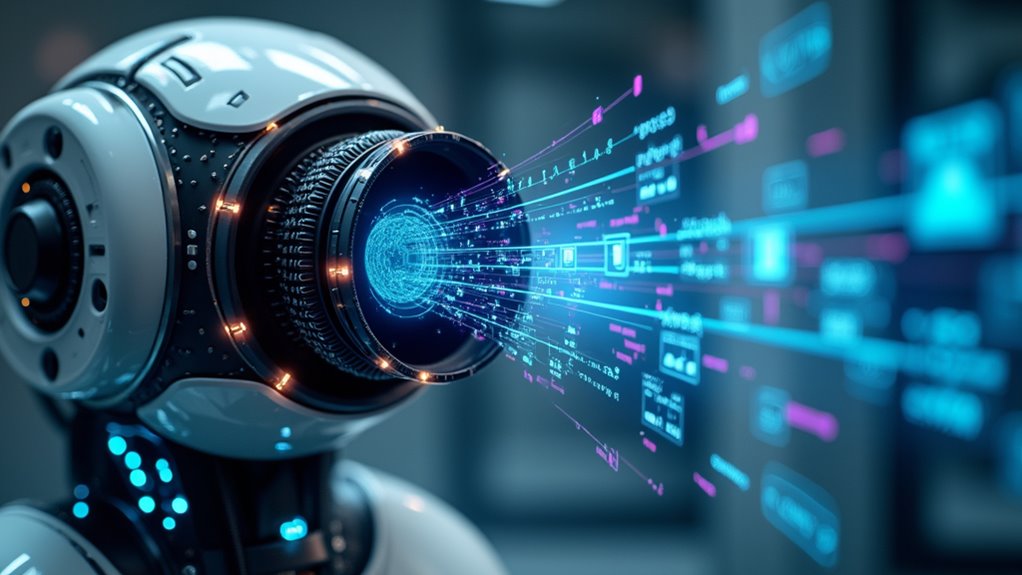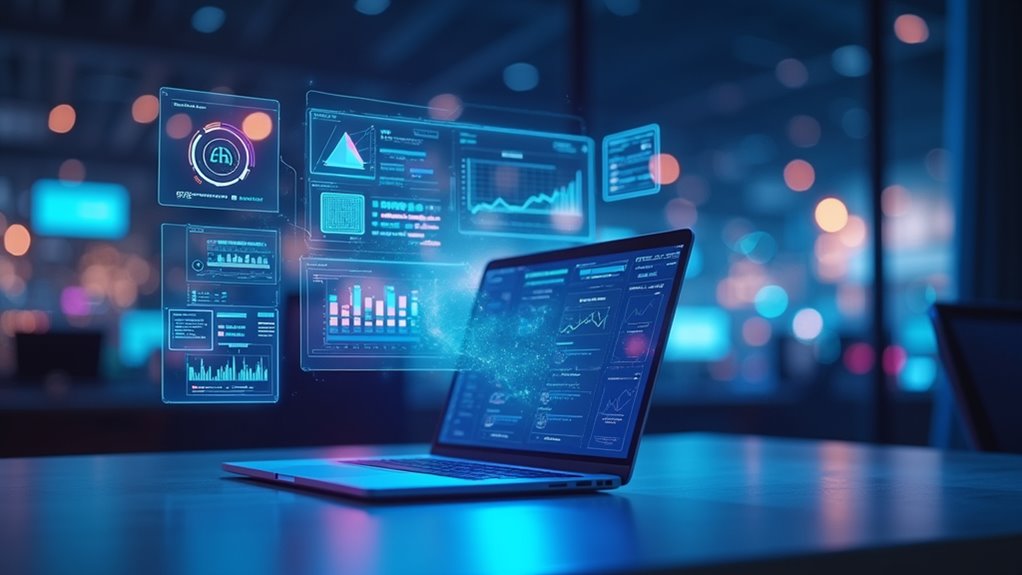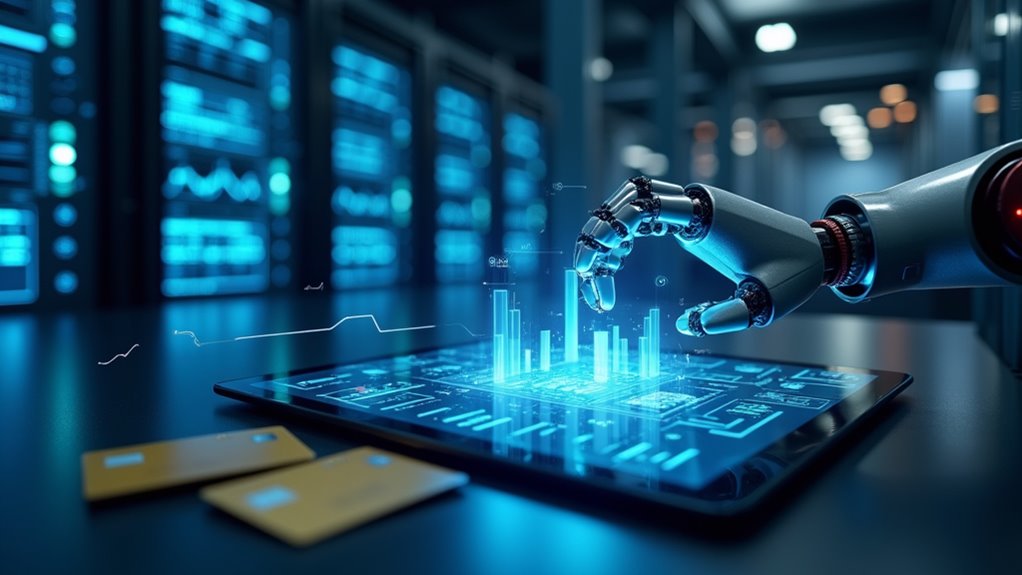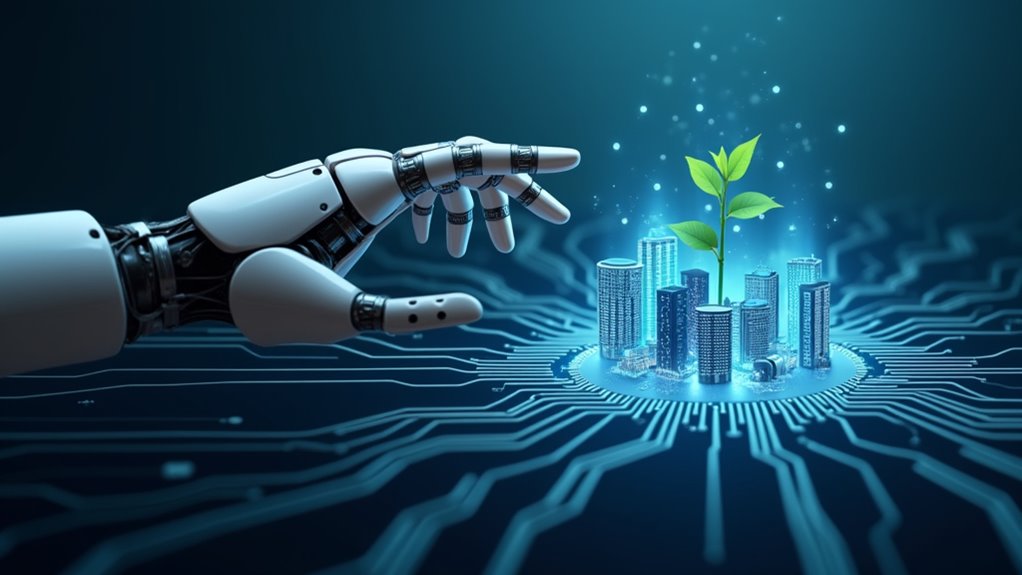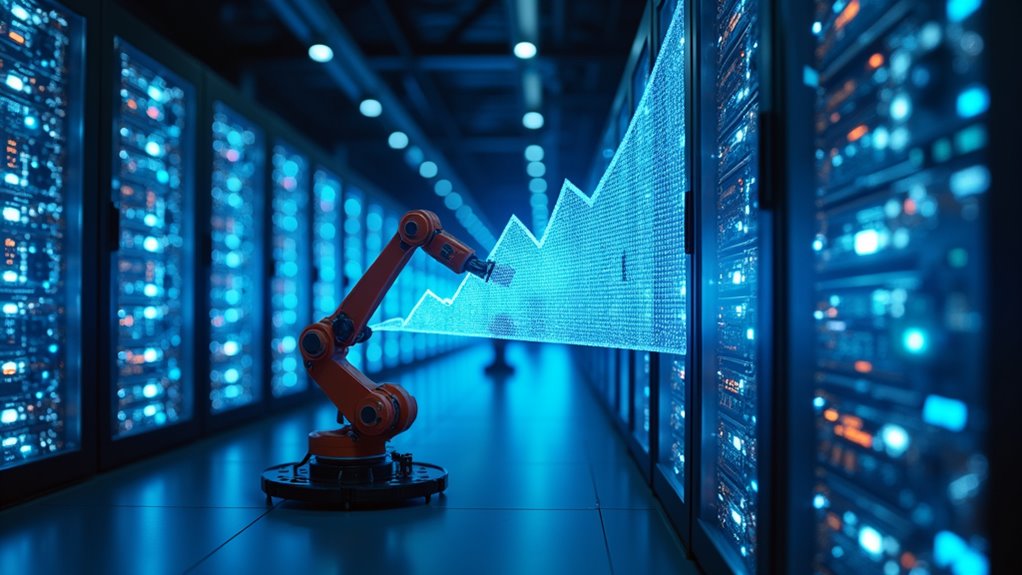Computer vision enables machines to “see” like humans, analyzing visual data through advanced algorithms. It’s now everywhere—from catching manufacturing defects to diagnosing diseases in medical images. Since 2012, deep learning has revolutionized the field, with systems that process thousands of images per minute with stunning accuracy. Your phone’s face recognition? That’s computer vision at work. The $50 billion market isn’t just growing—it’s transforming how technology interprets our world before our eyes.
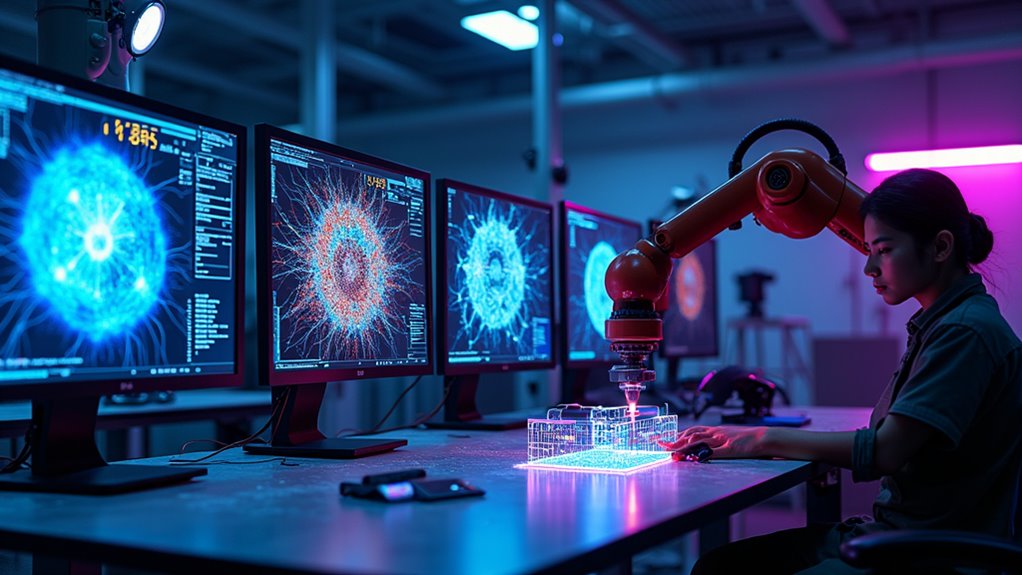
Imagine a world where machines can see, understand, and interpret visual information just like humans—that’s the revolutionary domain of computer vision. This branch of artificial intelligence empowers machines to extract meaningful data from visual inputs, transforming how we interact with technology across countless industries. Computer vision combines sophisticated image processing techniques with visual recognition capabilities to mimic—and often exceed—human visual abilities.
The magic happens when AI meets visual data. Computer vision systems leverage artificial intelligence to process what they “see,” creating a technological parallel to human vision. But don’t be fooled—these systems don’t just see; they analyze thousands of images per minute with remarkable precision. That’s right, your human eyes simply can’t compete with the processing power of a well-trained CNN.
Deep learning revolutionized this field after 2012, when breakthroughs like AlexNet dramatically improved accuracy in image classification tasks. Neural networks now power everything from facial recognition to autonomous vehicles, learning from vast datasets without explicit programming. These self-teaching capabilities mean computer vision systems get smarter over time—scary or impressive? Probably both. Popular platforms like Google Cloud Vision provide accessible interfaces for developers to implement these sophisticated AI image analysis capabilities without starting from scratch.
The revolution of computer vision wasn’t gradual—it was an AI earthquake that forever changed how machines interpret our world.
The market for computer vision technology is booming, projected to reach nearly $50 billion. Why? Because it solves real problems. Manufacturing plants use it to catch product defects invisible to tired human inspectors. Healthcare professionals leverage it to analyze medical images and detect diseases earlier. Retailers track inventory with unprecedented accuracy, and security systems monitor environments for suspicious activity. Unlike early systems requiring manual input, modern computer vision employs autonomous detection systems that can identify and recognize images with minimal human intervention. The development of computer vision has a rich history dating back to 1959 with neurophysiological experiments that laid the groundwork for today’s advanced systems.
These applications rely on convolutional neural networks breaking images into pixels and making predictions based on patterns. The machine fundamentally asks: “Does this collection of pixels look like a face? A car? A tumor?” Through multiple neural network layers, computers assemble thorough understanding from visual data.
Next time you access your phone with your face or watch your car avoid pedestrians, remember—you’re witnessing the fascinating intersection of computer vision and artificial intelligence. The machines aren’t just watching; they’re understanding.
Frequently Asked Questions
How Does Bias Affect Computer Vision Algorithms?
Bias in computer vision algorithms reduces performance by limiting how well systems handle diverse real-world scenarios.
Non-representative training data creates unfair outcomes for underrepresented groups—garbage in, garbage out!
Algorithm fairness suffers when models perpetuate societal stereotypes, potentially leading to discriminatory decisions in applications like facial recognition.
The consequences? Reduced trust, economic impacts, and reinforced inequalities.
Detection tools and diverse datasets help, but creating truly unbiased systems requires constant vigilance and interdisciplinary approaches.
What Are the Privacy Concerns With Facial Recognition Technology?
Facial recognition technology raises major privacy concerns beyond just computers watching you.
Without proper consent, companies collect and store your facial data—which, unlike passwords, can’t be changed if stolen. This creates serious facial data security risks.
Mass surveillance systems track people in public spaces, raising surveillance ethics questions about our right to anonymity.
The lack of transparency about how facial data is stored, shared, and protected should worry everyone.
Time for stronger regulations!
Can Computer Vision Work in Low-Light Conditions?
Computer vision can indeed work in low-light conditions, but it requires specialized techniques.
Low light enhancement algorithms can boost visibility in dark images, while image denoising reduces the grain that typically plagues nighttime photos. Think of it as giving cameras night vision goggles!
Modern systems employ techniques like histogram equalization and deep learning to transform those murky, grainy nighttime scenes into something actually useful.
Without these enhancements, your fancy AI system might as well be wearing sunglasses at midnight.
How Are Adversarial Attacks Mitigated in Vision Systems?
Vision systems defend against adversarial attacks through several methods.
Adversarial training techniques expose models to malicious examples during development, teaching them to recognize and resist manipulations. Robust model architectures incorporate defensive distillation and regularization to reduce vulnerability.
Ensemble approaches combine multiple models’ predictions for greater stability. Real-time detection algorithms can identify suspicious inputs before processing.
These defenses require constant updating, as attackers constantly evolve their methods. The trade-off between security and performance remains a significant challenge.
What Computational Resources Are Required for Real-Time Image Processing?
Real-time image processing demands substantial computational muscle.
GPU acceleration is critical for parallel operations, slashing processing latency that would otherwise make applications crawl.
Memory optimization techniques prevent bottlenecks when handling high-resolution streams.
Don’t underestimate algorithm efficiency—poorly coded solutions will choke even powerful hardware!
Modern systems often distribute workloads across specialized processors, balancing performance against power consumption.
The difference between smooth operation and frustrating lag often comes down to these four pillars of computational resource management.
